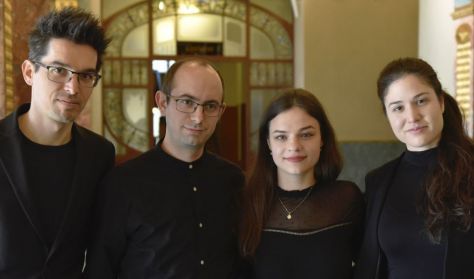Towards the end of his twenties and during his honeymoon in the Black Forest, Mendelssohn began writing the three string quartets Op. 44, the second of which stands in the same key as the Violin Concerto. The refined and passionate excitement of the two outer movements and their constantly tiptoeing, almost nervous virtuosity is counterbalanced by the intimately lyrical tone of the song-like third movement. But there is no lack of Mendelssohn's trademark, the fleet, richly ornamented and sparkling scherzo either.
Not only technical challenges await anyone who picks up Bartók's Microcosmos, a cornerstone of piano instruction: you'll learn compositional tricks, and find character pieces alongside program music. András Soós, composer, conductor and choirmaster, made the first transcriptions of the Mikrocosmos for the Hungarian ensemble Group 180 in 1985, on the 40th anniversary of Bartók's death. The series published this year, which adapts almost all of Bartók's movements for various string ensembles, has taken its final form over the course of the past decades.
In places Bartók's influence is evident in the String Quartet No. 15 by Weinberg, a Jewish composer from Poland who fled to the Soviet Union. The nine movements of aphoristic brevity do not bear a title, only metronome markings. The emotional world of this work ranges from the introverted, quiet confession of the first three movements, through the more assertive tone of the next three, the expansive lyricism of the seventh and the almost dancing pizzicatos of the eighth movement, to the again somewhat sombre ninth movement, which harks back to the earlier movements. The piece, keen to wander in the world of dissonances, more than once winks towards atonality.
Program:
Felix Mendelssohn: String Quartet in E minor, Op. 44 No. 2
Béla Bartók – András Soós: Mikrokosmos – excerpts
*****
Mieczysław Weinberg: String Quartet No. 15 Op. 124
Featuring:
Ágnes Langer - violin
Eszter Kökény - violin
Péter Tornyai - viola
Tamás Zétényi - cello
With a short Hungarian introduction by music historian Zoltán Farkas




